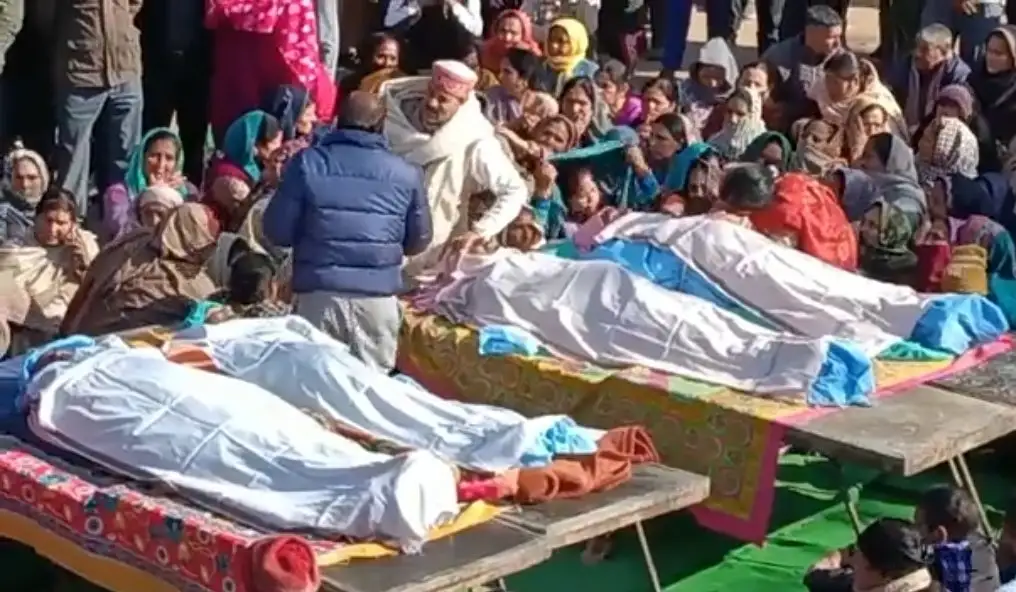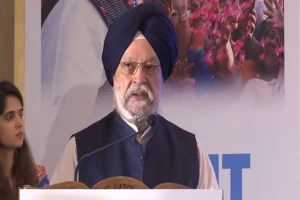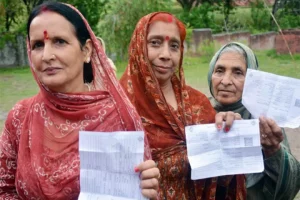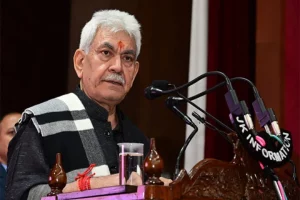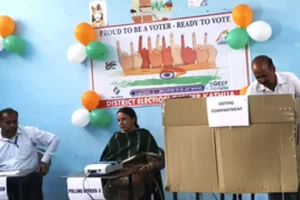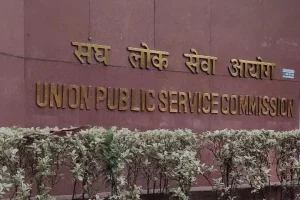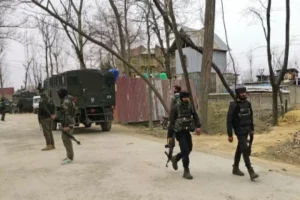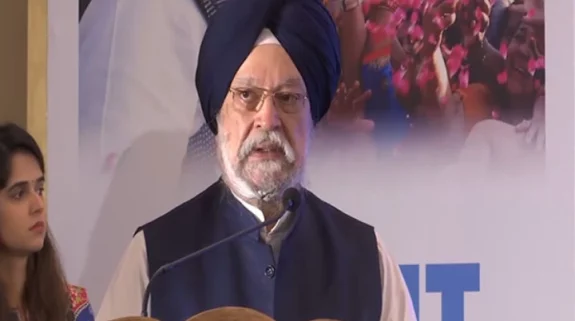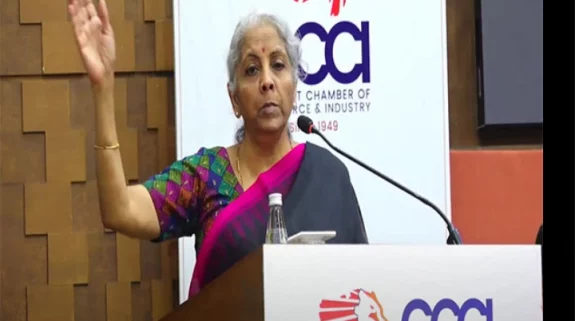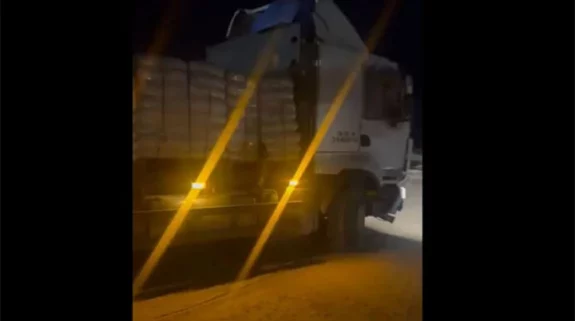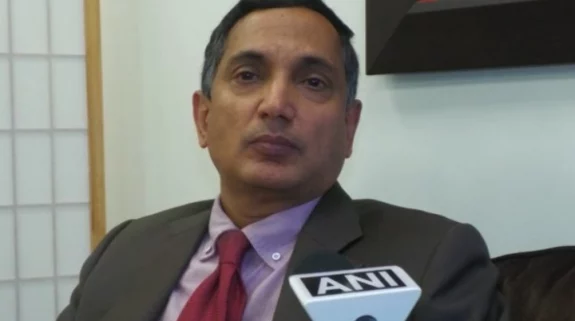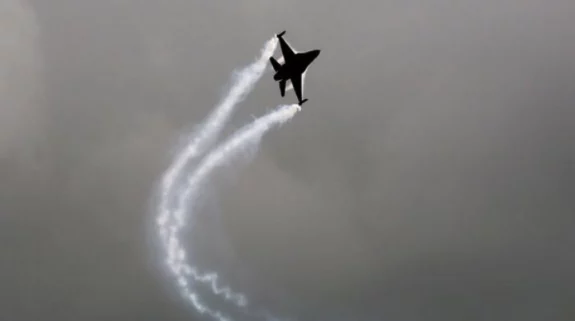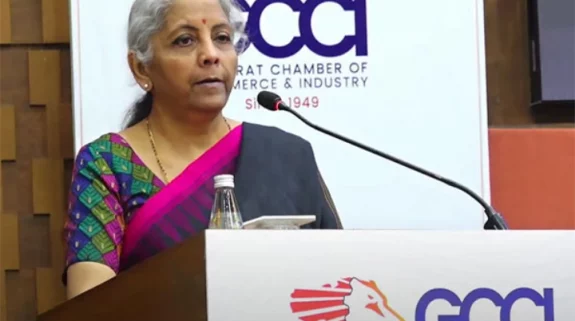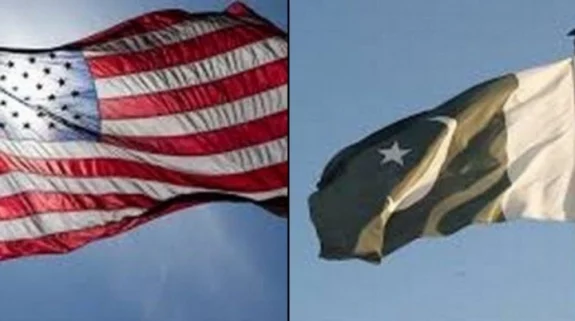The killing of 6 members of the minority Hindu community in the twin terror attacks at Dhangri, in Jammu’s Rajouri district, close to the Line of Control (LoC), on the arrival of the year 2023, appears to be an egregious attempt to ignite a communal flare up in the Union Territory of Jammu and Kashmir.
LG Manoj Sinha visits Dhangri village in Rajouri and met with the bereaved families. While death toll in Rajouri terror attacks went up to 6 including 02 children killed today in IED blast. #RajouriTerrorAttack pic.twitter.com/voZAUR4IGM
— Shubam Ramban (@RambanShubam) January 2, 2023
Over the years, terrorists of at least one jihadist organisation, Masood Azhar’s Jaish-e-Mohammad, have shown a tendency to ‘celebrate’ the new Christian calendar year with some or the other kind of bloodshed. Only a professionally conducted enquiry may unravel the truth but the signature on the firing, followed by an IED blast, cannot be ignored for any compulsion or convenience.
On 1 January 2016, JeM carried out a major suicide attack on an installation of the Indian Air Force at Pathankot, in Punjab, bordering Jammu and Kashmir. Seven security forces personnel, one civilian and five fidayeen died in the encounter over two days.
On 1 January 2018, five paramilitary personnel were killed in a suicide strike on a CRPF camp near Lethapora, Awantipora, in the Kashmir valley. According to the Police claims and investigations, this was conducted by the local Kashmiri suicide bombers Fardeen Ahmad Khanday of Nazneenpora Tral, the son of a head constable of the Jammu and Kashmir Police, and Manzoor Ahmad Baba of Drabgam, Pulwama. Both died in the encounter. A video clip purportedly recorded by Khanday confirmed the JeM’s involvement.
Call it design or coincidence, on 1 January 2023, four members of the Hindu community were selectively gunned down and six more left injured at Dhangri, a village not more than 10 km from the district headquarters of Rajouri. In less than 12 hours, an IED blast at the same hamlet killed two young children and left seven, including three women, injured.
`Killing of Hindus benefit ONLY one party`: Mehbooba Mufti attacks BJP on Rajouri attack pic.twitter.com/C3NqI2xXjw
— Sunder Barange (@sunder_barange) January 2, 2023
While the political leaders, including the former Chief Ministers Farooq Abdullah, Omar Abdullah, Ghulam Nabi Azad and Mehbooba Mufti, invariably condemned the twin attacks, Lieutenant Governor Manoj Sinha announced ex-gratia munificence of Rs 10 lakh each and a government job to a kin for the dead and Rs 1 lakh each for the injured.
The BJP’s troubles are understandable as the terror strikes on the Hindu community have been conducted in a UT which is currently under the direct control of the Centre. These have taken place in the residential district of the party’s J&K President Ravinder Raina at a time when the Government from New Delhi to Srinagar has been claiming peace and improvement in the situation and all the political parties, including the BJP, have been calling for the first Assembly elections in the J&K UT.
The timing of the Rajouri strikes is significant for some more reasons. These have been executed in hours by the Director General of the J&K Police Dilbagh Singh and the Additional DGP Kashmir Vijay Kumar claiming that the militancy had been brought down to its lowest ebb. On the other hand, many of the opposition leaders as also a well-knit separatist-terrorist ecosystem, have been disputing the government claims. They have been invariably attributing the thaw in the violence and turmoil to what they call “repressive tactics adopted after abrogation of Article 370” in August 2019.
The PDP President Mehbooba Mufti has been rigorously assailing the BJP Government at the Centre. Of late, she has been claiming that the militancy was spreading over Jammu after a long pause of peace. Early this year, and in October 2021, there have been coordinated attempts to exploit certain attacks on the minority community members in Kashmir to establish that the situation was worsening after August 2019. A total shutdown in Rajouri, coupled with slogans against the government and the LG, will obviously sooth detractors of the BJP Government.
The attacks in Rajouri, nevertheless, need to be seen from all angles. These have come after a series of incidents and encounters in the Jammu province, particularly in the Rajouri district, in 2021 and 2022.
Apart from a chain of three encounters, in which the security forces suffered losses, there have been certain attacks clearly aimed at generating a communal strife in the border district.
In March and April 2022, there were twin blasts in Rajouri. The investigations subsequently established that these– and a few more in the previous three years– had been planned and executed by one Altaf Hussain Shah. Shah had successfully infiltrated the BJP which appointed him as the IT and Social Media head of the Minority Morcha in Jammu. On at least one occasion, he succeeded to gain access to the union Home minister in New Delhi. He went into hiding in May 2022 but was soon seized by the villagers in Reasi and handed over to the Police.
The State Investigation Agency (SIA) has lately completed the investigation and filed a chargesheet of Shah’s involvement in the terror crimes in a designated court. Most of his actions were aimed at creating communal clashes in Rajouri.
On 11 August this year, five soldiers and two suicide bombers died in a staggered encounter in Rajouri’s Pargal area.
The month of December 2022 witnessed a crescendo of mysterious attacks in Jammu and Rajouri. Late in the night on 6 December, a grenade was lobbed towards a Police Post at Sidhra, on the outskirts of Jammu. It didn’t cause any harm but indicated some presence of terror cadres in Jammu. On 16 December, two non-J&K labourers, both Hindus, were killed in mysterious firing outside an Army camp which was later established as a terror attack.
On 28 December 2022, four unidentified terrorists, who according to the Police were cadres of JeM, were killed in a dramatic encounter at Sidhra. A large quantity of arms ammunition, including 7 AK rifles, one M-4 rifle and three pistols, was recovered from the site of the encounter.
In the next four days, suspected terrorists attacked the Hindus at a time when the Army chief General Manoj Pande was on a visit of the forward positions in J&K’s Kupwara district.
Rajouri, in fact, appears to have been chosen for a reason. It has a long history of communal clashes which finally subsided after 2015. People still remember the communal clashes of 1947 between the Hindu-dominated Jawahar Nagar and the Muslim-dominated Ward No: 10 of the Rajouri town.
After 1989, scores of encounters and massacres took place in the Rajouri district. In September 2000, four persons were killed in the communal clashes that were ignited by a football match. Arson and curfew followed.
On 9 September 2022, section 144 Cr PC was enforced in Rajouri when a group of Muslims called for a march to a disputed land of 600 sq. feet after the Friday prayers at a mosque.
In spite of this history and sustained attempts of provocation, better sense has prevailed over the majority of both the communities, the Muslims and the Hindus, who didn’t fall in the trap and the localised tensions didn’t spill over to other areas, districts or the province in the last over 15 years.
Also Read: NIA likely to spearhead probe into double terror strike in Rajouri






